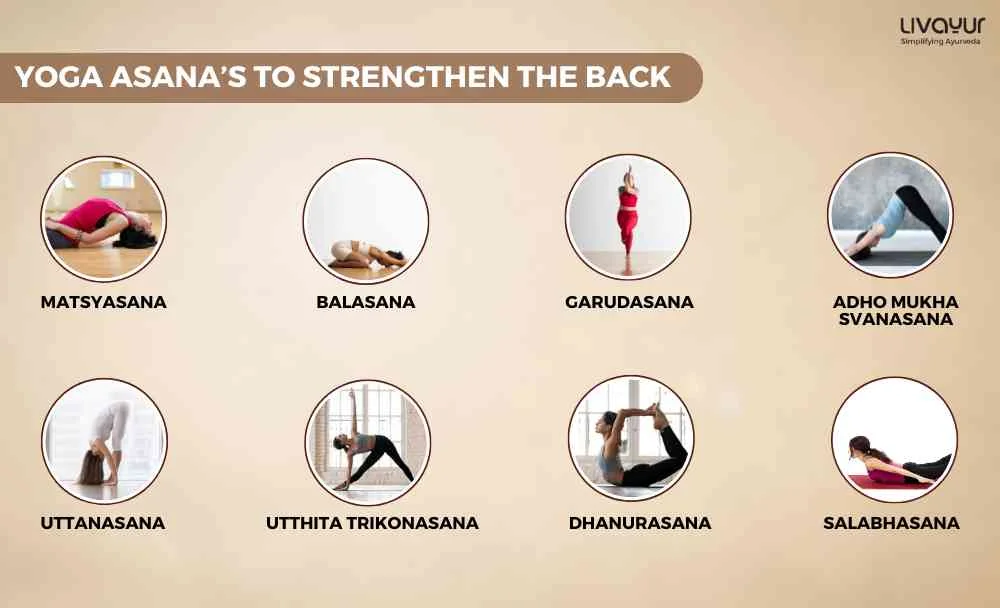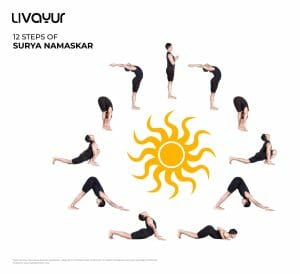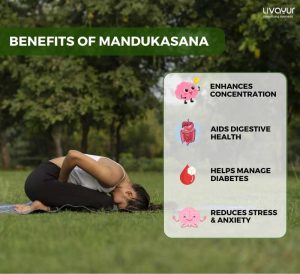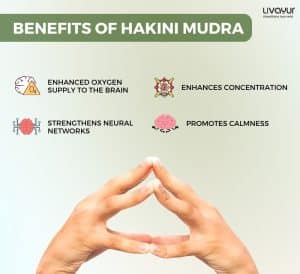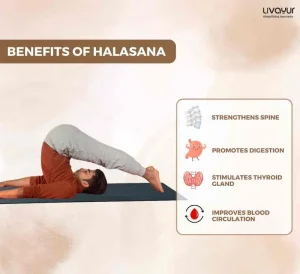Building a strong and well-defined back not only enhances your physique but also improves your overall strength and posture. A well-developed back provides stability and supports various daily activities and exercises. To help you achieve a strong and muscular back, we have compiled a list of 20 effective back exercises that target different areas of the back muscles. Incorporating these exercises into your workout routine will help you develop a balanced and impressive back.
1. Marjaryasana/Bitilasana
The Marjaryasana/Bitilasana or Cat-Cow Pose is an excellent warm-up exercise that stretches and strengthens the entire back. Start on all fours, with hands directly beneath the shoulders and knees under the hips. Inhale, arch your back and lift your head and tailbone to create a concave curve (Cow Pose). Exhale, round your spine upward, dropping your head and tailbone (Cat Pose). Repeat for 10-15 breaths. [1] [2]
2. Adho Mukha Svanasana
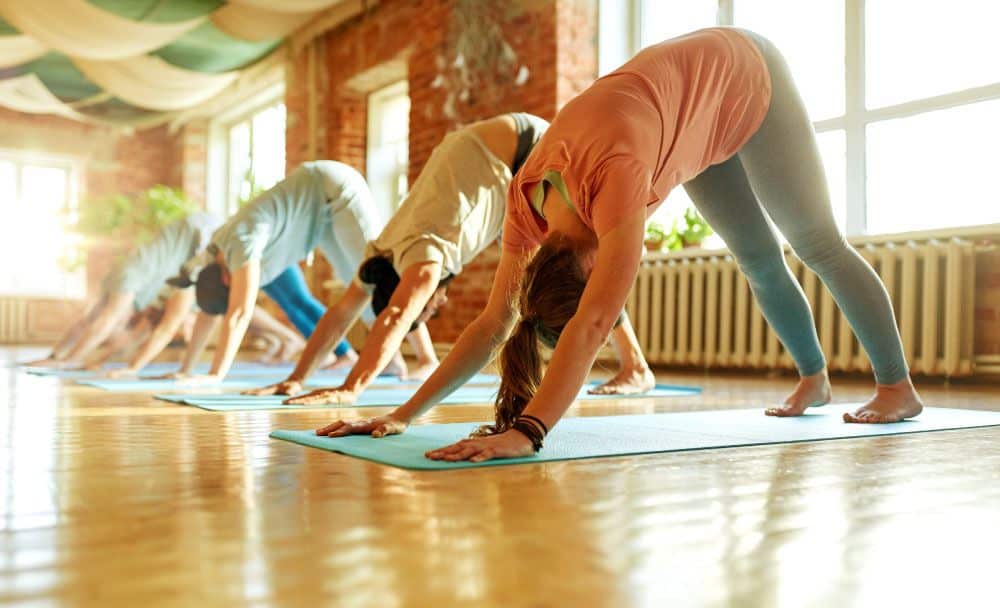
Adho Mukha Svanasana or Downward-Facing Dog is a classic yoga pose that targets the entire back, stretching and strengthening the muscles simultaneously. Begin on your hands and knees, tuck your toes, and lift your hips up and back. Press your palms into the ground and straighten your legs as much as possible. Hold for 5-10 breaths, focusing on lengthening your spine. [3]
3.Urdhva Mukha Svanasana
Urdhva Mukha Svanasana or Upward-Facing Dog is a powerful pose that strengthens the upper back, shoulders, and core muscles. Lie face down, with your hands placed next to your ribs. Inhale, press your hands into the ground, and lift your torso, rolling your shoulders back. Keep your legs engaged and the tops of the feet pressing down. Hold for 3-5 breaths. [4]
4. Salabhasana
Salabhasana or Locust Pose is an excellent exercise to strengthen the lower back and glutes. Lie on your stomach with your arms by your sides. Inhale, lift your head, chest, arms, and legs off the ground while keeping the tops of your feet pressing down. Engage your back muscles and hold the pose for 5-8 breaths.
5. Salamba Bhujangasana
Salamba Bhujangasana or Sphinx Pose gently strengthens the lower back muscles and helps improve posture. Lie on your stomach, prop yourself up on your forearms, and relax your shoulders. Press your forearms and palms into the ground, lifting your chest while keeping your hips and legs relaxed. Hold for 5-8 breaths. [5]
6. Setu Bandhasana
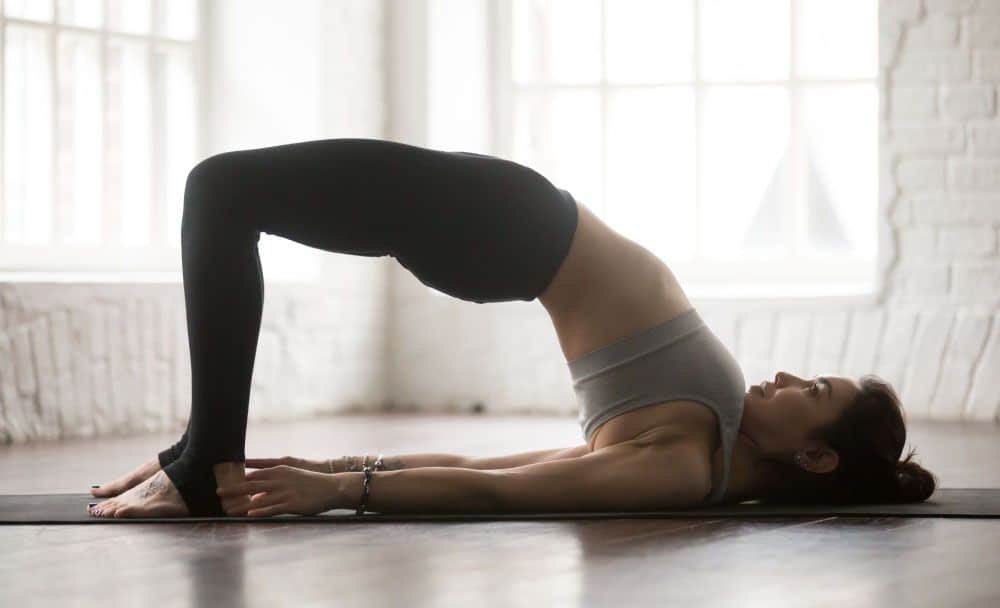
Setu Bandhasana or Bridge Pose targets the entire back, glutes, and hamstrings. Lie on your back, bend your knees, and place your feet hip-width apart. Inhale, press your feet and arms into the ground, lifting your hips up. Keep your thighs parallel to each other and engage your glutes. Hold for 5-8 breaths. [6]
7. Chakrasana
Chakrasana or Wheel Pose is an advanced backbend that strengthens the entire back, shoulders, and arms. Lie on your back, bend your knees, and place your feet hip-width apart. Place your hands by your ears, fingers pointing toward your shoulders. Press your hands and feet into the ground, lifting your hips and chest up. Straighten your arms if possible and hold for 3-5 breaths.
8. Dhanurasana
Bow Pose stretches and strengthens the entire back, opens the chest, and improves posture. Lie on your stomach, bend your knees, and reach your arms back to hold your ankles. Inhale, lift your chest and legs off the ground, kicking your feet into your hands. Hold for 5-8 breaths. [7]
9. Utthita Trikonasana

Utthita Trikonasana or Extended Triangle Pose stretches and strengthens the entire back, while also engaging the core and leg muscles. Stand with your legs wide apart, turn your right foot out, and extend your arms out to the sides. Exhale, reach your right hand toward your right ankle and extend your left arm up toward the ceiling. Hold for 5-8 breaths on each side. [8]
10. Uttana Shishosana
Uttana Shishosana or Extended Puppy Pose is a gentle backbend that stretches and opens the upper back and shoulders. Begin on all fours, walk your hands forward, and lower your chest toward the ground, keeping your hips above your knees. Rest your forehead on the mat and hold for 5-8 breaths.
11. Parsva Balasana
Parsva Balasana or Thread the Needle Pose releases tension in the upper back and shoulders, while also stretching the sides of the torso. Start on all fours, thread your right arm under your left arm, resting your right shoulder and temple on the mat. Extend your left arm forward or rest it on your lower back. Hold for 5-8 breaths on each side. [8]
12. Uttanasana
Standing Forward Bend provides a deep stretch for the entire back, hamstrings, and calves. Stand with your feet hip-width apart, hinge at your hips, and fold forward, reaching your hands toward the ground or grabbing your elbows. Relax your neck and hold for 5-8 breaths. [9]
13. Standing Forward Bend with Shoulder Opener
This variation of the Standing Forward Bend adds a shoulder stretch, targeting the upper back muscles. Stand with your feet hip-width apart, interlace your hands behind your back, and fold forward, letting your hands lift toward the ceiling. Hold for 5-8 breaths.
14. Ardha Pincha Mayurasana
Dolphin Pose strengthens the upper back, shoulders, and core, while also stretching the hamstrings. Start on your hands and knees, place your forearms on the mat, and lift your hips up. Keep your head and neck relaxed and hold for 5-8 breaths. [10]
15. Garudasana
Garudasana or Eagle Pose engages the back muscles and improves balance and focus. Stand tall, cross your right thigh over your left thigh, and wrap your right foot behind your left calf if possible. Extend your arms in front of you, crossing your right arm over your left arm, and press your palms together. Hold for 5-8 breaths, then switch sides. [11]
16. Ardha Matsyendrasana
Ardha Matsyendrasana and Seated Twist gently stretches and strengthens the entire back, improving spinal mobility. Sit with your legs extended, bend your right knee, and place your right foot outside your left thigh. Inhale, lengthen your spine, and exhale, twist to the right, placing your left hand on your right knee and your right hand behind you. Hold for 5-8 breaths on each side. [12]
17. Balasana
Balasana and Child’s Pose is a restorative pose that releases tension in the back and promotes relaxation. Kneel on the mat and bring your knees wide apart while keeping your big toes touching. Hinge forward from your hips and lower your torso between your thighs. Extend your arms forward or rest them alongside your body, palms facing up. Relax your forehead on the mat and breathe deeply for 5-10 breaths. [13]
18. Matsyasana
Supported Fish Pose opens the chest, stretches the front body, and gently arches the back. Sit with your legs extended and place a bolster or folded blanket horizontally behind you, just below your shoulder blades. Lie back on the support and extend your arms out to the sides. Relax your entire body and hold for 5-10 breaths. [14]
19. Pull-Ups
Pull-ups are a classic and highly effective exercise for targeting the upper back muscles, particularly the latissimus dorsi. Grasp a pull-up bar with an overhand grip, hands slightly wider than shoulder-width apart. Hang freely, then pull your body up until your chin is above the bar. Lower yourself back down with control and repeat. [15]
20. Viparita Karani
Supported Legs-Up-The-Wall Pose relieves tension in the lower back, promotes circulation, and induces relaxation. Sit sideways next to a wall, swing your legs up onto the wall, and lower your back onto the floor. Use a folded blanket or bolster under your hips if needed. Relax your arms alongside your body or place them on your belly. Close your eyes and breathe deeply for 5-10 minutes. [16]
FAQs
1. Can yoga really help build back muscles?
Yes, yoga can be highly effective in building back muscles. Yoga poses and exercises target the entire back, engaging various muscle groups, including the upper back, lower back, and core. With consistent practice, yoga can strengthen and tone the back muscles, leading to improved posture, stability, and overall back strength.
2. How often should I practice these yoga back exercises?
The frequency of your practice depends on your individual fitness goals and schedule. However, incorporating these exercises into your routine 2-3 times per week can yield noticeable results. Consistency is key when it comes to building back muscles, so find a schedule that works for you and stick to it.
3. Can yoga back exercises help with back pain?
Yes, yoga can be beneficial for alleviating back pain. The gentle stretches, strengthening poses, and improved posture that yoga offers can help relieve tension, reduce muscle imbalances, and promote better spinal alignment. However, if you have a specific back condition or injury, it is advisable to consult with a healthcare professional or a qualified yoga instructor for personalized guidance.
4. How long should I hold each yoga pose?
The duration of holding each pose can vary depending on your comfort level and experience. As a general guideline, aim to hold each pose for 5-8 breaths initially, gradually increasing the duration to 10 breaths or more as you become more comfortable. Remember to focus on proper alignment, breathing deeply, and listening to your body throughout the practice.
5. Can I combine yoga back exercises with other forms of exercise?
Yoga can be a great complement to other forms of exercise. You can incorporate these back exercises into your existing workout routine or combine them with other strength training exercises for a well-rounded fitness regimen. Just ensure that you allow for proper rest and recovery between workouts to avoid overexertion and maintain a balanced approach.
Conclusion
The exercises mentioned in this article provide a comprehensive approach to target various areas of the back, from the upper to the lower region. Remember to listen to your body and practice with awareness, gradually increasing the intensity and duration of the poses as your strength and flexibility improve.
Disclaimer: This article is only for providing a general knowledge perspective and does not constitute medical advice. Kindly seek the help of a trained medical practitioner before initiating any treatment.
References:
- The Impacts of Pilates and Yoga on Health-Promoting Behaviors and Subjective Health Status (mdpi.com)
- Yoga Is as Good as Stretching–Strengthening Exercises in Improving Functional Fitness Outcomes: Results From a Randomized Controlled Trial | The Journals of Gerontology: Series A | Oxford Academic (oup.com) (mdpi.com)
- Evaluation of the Effectiveness and Efficacy of Iyengar Yoga Therapy on Chronic Low Back Pain – PMC (nih.gov)
- Core muscle function during specific yoga poses – ScienceDirect
- Effects of Sphinx Pose (Salamba Bhujangasana) Yoga on chronic low back pain (researchgate.net)
- Anatomical Correlation of Core Muscle Activation in Different Yogic Postures – PMC (nih.gov)
- Importance Of Dhanurasana In Day To Day Life (jvwu.in)
- Yogic Management In Lumbar Spine Stenosis | Vidhyayana – An International Multidisciplinary Peer-Reviewed E-Journal – ISSN 2454-8596 (vidhyayanaejournal.org)
- Suryanamaskar for human wellness (kheljournal.com)
- Iyengar Yoga and the Use of Props for Pediatric Chronic Pain: A Case Study – PMC (nih.gov)
- Yoga as an intervention to manage multiple sclerosis symptoms – ScienceDirect
- A Clinical Study on the Efficacy of a Nutritional Compound (researchgate.net)
- Yoga-and-Salaah-Some-theoretical-comparisons.pdf (researchgate.net)
- Comparative immediate effect of different yoga asanas on heart rate and blood pressure in healthy young volunteers – PMC (nih.gov)





